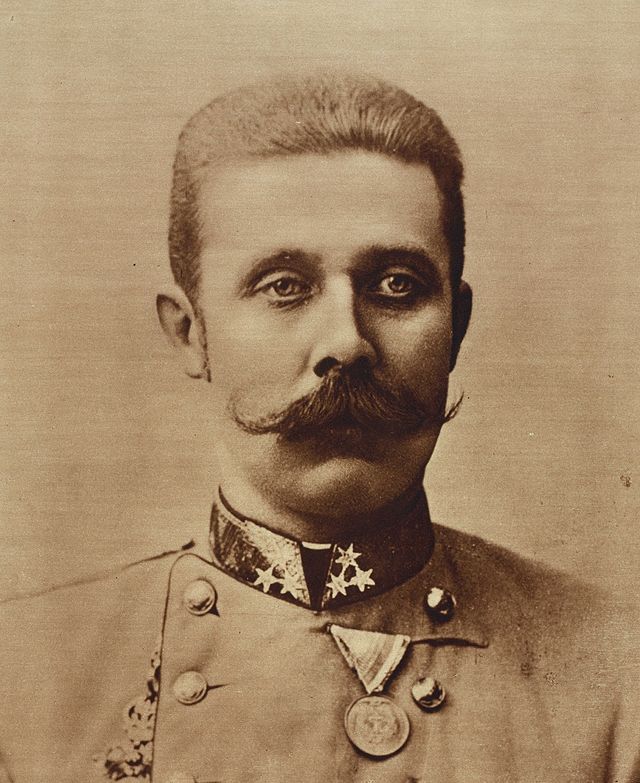He was part of Austria’s ruling monarchy, strongly against military intervention. So how did the death of Franz Ferdinand lead to the start of the First World War?

It’s an often-overlooked fact that it was almost a bomb and not a revolver that killed Archduke Franz Ferdinand and his wife Sophie in Sarejevo a century ago. As it was, the terrorist bomb that was intended for him exploded under the car behind, injuring its passengers but leaving the Archduke unhurt. However, it was an ominous sign of things to come.
Later that day on 28 June 1914 fate played its part as the Archduke’s car coincidentally came within easy range of the assassin Gavrilo Princip who was able to fire his gun at close range, killing the Archduke and his wife. It was a moment that would shape world history forever, starting a chain reaction of events that would lead to the start of the First World War.
Early life
Born in Graz, Austria, Franz Ferdinand was the eldest son of Archduke Karl Ludwig of Austria (the younger brother of Franz Joseph and Maximilian) and of his second wife, Princess Maria Annunciata of Bourbon-Two Sicilies. When he was only 11 years old, Franz Ferdinand’s cousin died, naming him as his heir and making him one of the wealthiest men in Austria.
In 1889, Franz Ferdinand’s cousin Crown Prince Rudolf committed suicide leaving Franz Ferdinand’s father, Karl Ludwig, as first in line to the throne. Karl Ludwig renounced the throne almost immediately and Franz Ferdinand was groomed to succeed him.
Like many of the ruling Habsburg line, Franz Ferdinand entered the Austro-Hungarian army and earned rapid promotion. He was given the rank of lieutenant at age 14, captain at 22, colonel at 27, and major general at 31. He forged a reputation as a difficult character, making his mark on Viennese politics after his appointment as inspector-general of the army in 1906. He clashed frequently with the Austrian Chief of Staff who took a strongly interventionist view of Austrian foreign policy – the Archduke believed that armed forces should be used for defence purposes only.
On 1 July 1900, Franz Ferdinand married Countess Sophie Chotek, a marriage that caused considerable controversy among his family since he refused to be betrothed to any other of Europe’s ruling classes. Despite her aristocratic background, Emperor Franz Joseph strongly disapproved of the match. Ironically, the assassination of the Duke and his wife was one of the few times she had been permitted to ride in the royal carriage in public.
Death and its consequences
Gavrilo Princip had been a member of the Black Hand, a Serbian freedom fighter group, who hoped to eliminate the Archduke due to the fact that the Archduke planned to give concessions to the South Slavs, making their dream of a unified Greater Serbia difficult to obtain.
Since Gavrilo Princip and his accomplices were Bosnian Serbs, the monarchy accused Serbia of being behind the assassination. Austria-Hungary wanted to eliminate the ‘Serbian threat’ and the assassination of the Archduke provided the perfect excuse to declare war on its Balkan neighbour.
On 23 July, Austria-Hungary presented an ultimatum to Serbia and on 28 July, the Austro-Hungarian troops invaded Serbia, heralding the start of the First World War. Britain would soon become embroiled in the conflict that would see more than 16 million people lose their lives. For a man who had rallied against interventionism, it was a cruel blow to Franz Ferdinand’s legacy that his death would be used as a pretext for war.
Read more about the events of WWI
|
|||||||||||||||||








 © 2024
© 2024